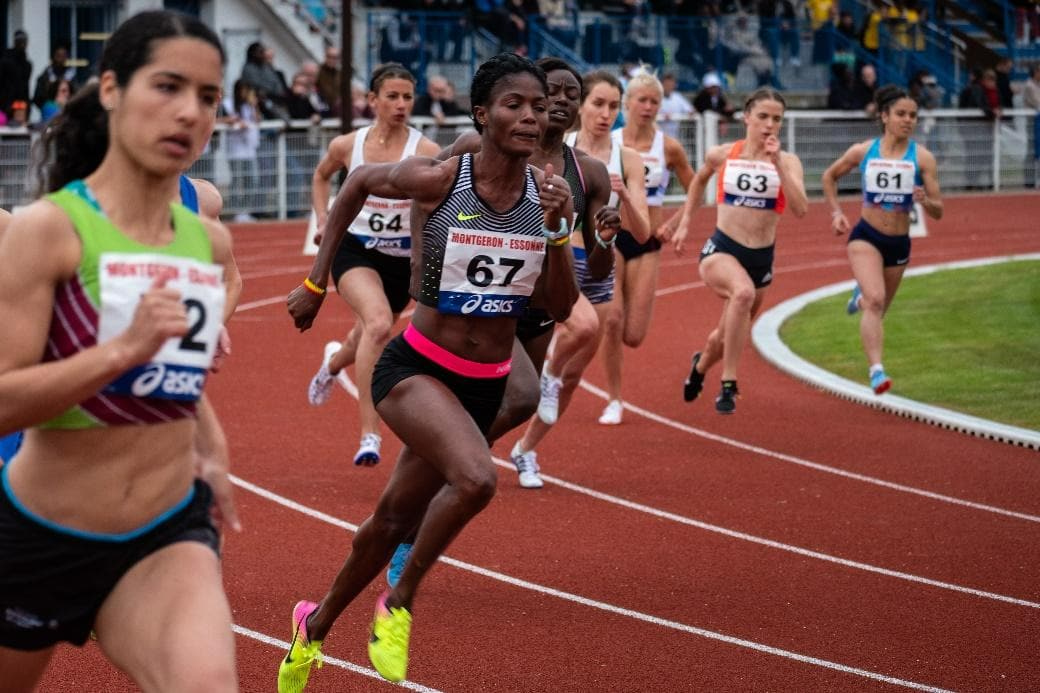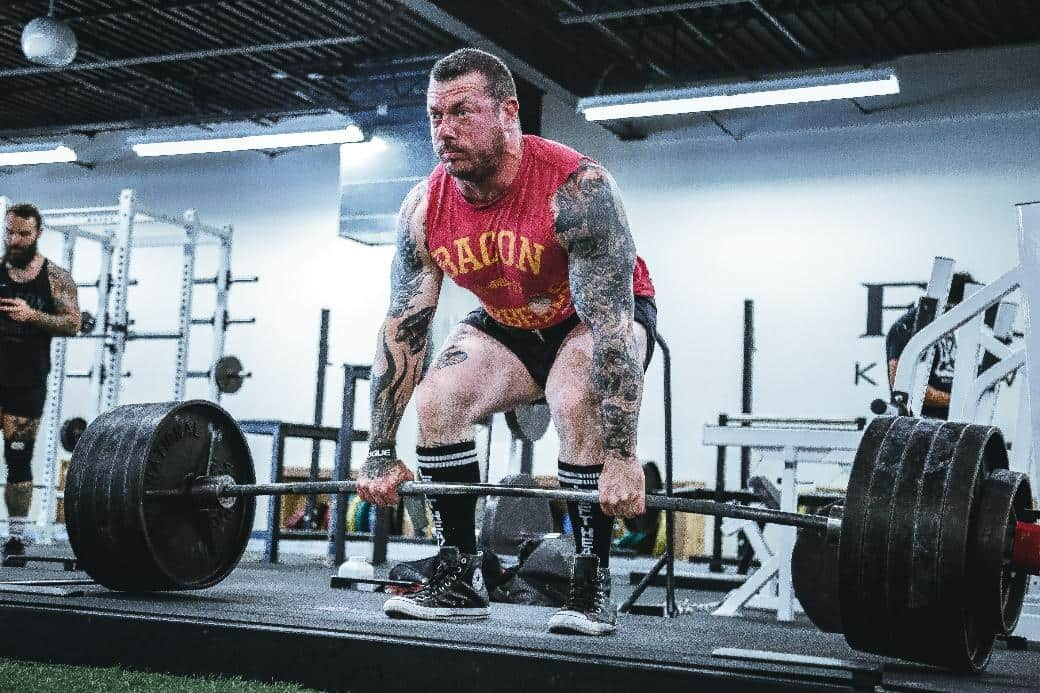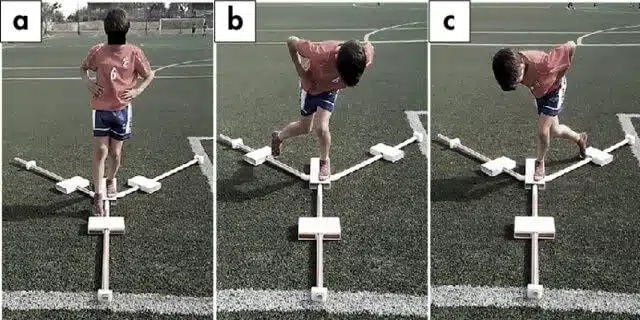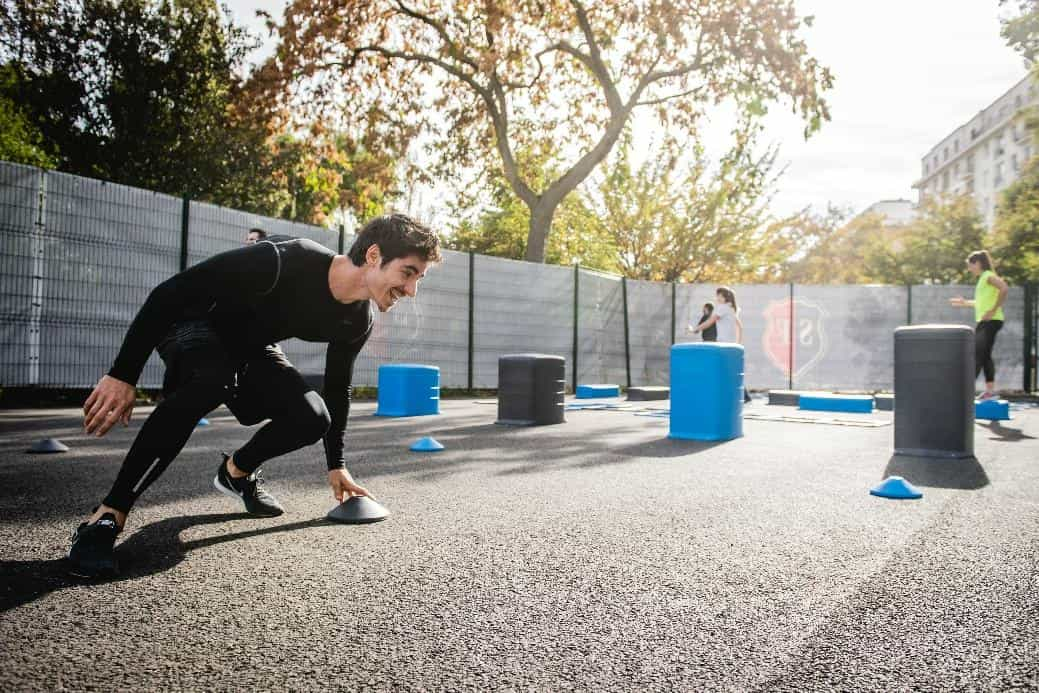20 de April de 2023
How To Conduct Efficient Performance Tests for Your Athletes
There Are as Many Performance Tests as Athletes
Performance testing should be part of sports planning to obtain information about the athlete’s condition and the effectiveness of training. Recreational athletes train a few days a week because it is not their real way of life. Elite athletes train almost every day but cannot afford to waste time training. Both scenarios show that, although performance testing is essential, we must choose the right times and the really indispensable tests for our sport (Koopmann, Faber, Baker, & Schorer, 2020).
In turn, the organization differs greatly when performance testing a single athlete or an entire team. It will also influence the material and space we have available, and of course, each sport, and even each position on the field, may require individual demands, so the tests may be different (Haff & Triplett, 2015). As you can see, it is far from easy to conduct truly efficient performance tests on your athletes, but we can get it right if we ask ourselves a series of questions and go around the circle.
Different abilities, different performance tests
The physiology of a marathon runner has nothing to do with that of a baseball pitcher or a rugby wing. Each athlete and each position require a very different skill set, so the test battery selected for one may not be appropriate for another (Fukuda, 2018). It is the key performance indicators (KPIs) that will determine what are the fundamental characteristics of each athlete that generate the greatest sporting achievements.
The first step to effective performance testing is to analyze the KPIs for each athlete and use the test that measures that particular value (Mccance, Hastings, & Dowler, 2015). We can give a marathon runner an agility or acceleration test such as the 5-10-5 test, but it will not give us information about their real performance, nor the effectiveness of the program we are following. However, the same test is indispensable for a rugby player playing in the three-quarter positions where acceleration and deceleration with changes of direction are required.
Specific Performance Tests to Get the Most Out of Your Athletes

A climber has totally different physical and technical requirements than a soccer player. The climber has greater strength demands, especially in the hands, they use different systems to obtain energy, and we could go on at length (Maciejczyk et al., 2021). The most important thing to select the most useful performance tests for your athletes is to know all the ins and outs of the sport discipline. For that we will have to ask ourselves a long list of questions that will be discarding some tests and making room for others.
What physical quality stands out from the others in the sport?
There are sports that are purely strength-based, such as strongman or powerlifting, and others that are purely endurance-based, such as long-distance endurance events. In turn, strength can be manifested in a purely explosive form, such as a high jumper in athletics or a baseball hitter. With endurance the same is true, as a 5,000-meter runner will need to train differently or a marathon runner.
The above sports are very easy to analyze and come up with specific performance tests. To a high jumper, it’s mandatory to do high jump tests, for which we can use the Vitruve speed measurement device (Rodríguez-Rosell, Mora-Custodio, Franco-Márquez, Yáñez-García, & González-Badillo, 2017). For a long-distance endurance runner, we will plan performance tests to analyze what their thresholds and training zones are in order to fine-tune when proposing race paces The headache comes in team sports where the demands are much more heterogeneous, and we will even have to look at position by position.
Are Movements from sport continuous or are they characterized by high intensity flickering movements?
Thanks to the technology that incorporates GPS, or directly with the cameras installed in the playing fields of some sports, we can know not only the distance that our player has traveled, but how he has done it, which is really the important thing. In soccer there are abysmal differences between a defensive midfielder and a striker (Forcher et al., 2022). The role of the midfield player requires more continuous runs with less acceleration and deceleration, which is not to say there is none. A striker may be walking for minutes and suddenly perform a sprint at maximum speed.
The striker then starts from a standstill or from a low speed and must reach the maximum possible speed in the minimum possible time. We will have to analyze his acceleration capacity with performance tests such as the time it takes to complete 10 – 30 meters. Tests of 60 meters or more will be of little use to us because if we analyze his movements, we will see that throughout the season this does not occur or occurs very occasionally. In the midfield player it will be interesting to perform other types of performance tests such as a yo-yo test in which we perform back and forth of twenty meters with increasing speed, which is much more similar to his position (Schmitz et al., 2018).
The metabolic system for obtaining energy will depend on how the athlete moves on the field (Baker, McCormick, & Robergs, 2010). A phosphagen energy system is mainly used in explosive actions of just a few seconds duration, such as a jump or throw. The glycolytic system is the one that occurs in actions of medium duration, but with high and moderate intensities. The oxidative system comes into play mainly when the intensity is low, and the duration is high. Each system is associated with a sport and athlete, so performance tests should be focused on actually measuring the energy system that we use the most in our sport.
In the case of high intensity movements, how much rest time do we have until the action happens again?
Sporting success depends not only on the action, but also on the recovery that precedes the gesture and allows us to perform it optimally. Each discipline has its own times, and thanks to the data we have today, we know very approximately the time that elapses between explosive actions in different sports. Disciplines such as martial arts, boxing and fighting sports in general have clearly marked rest times. One of the basic performance tests in fighting sports is to monitor how our athlete recovers in the minutes between rounds.
In team sports it becomes much more complex to fit a rest time between high intensity actions, since a basketball center can link two or even three plays that require sprinting for an attack-defense transition in which there has been a steal or something similar (Mancha-Triguero, García-Rubio, Calleja-González, & Ibáñez, 2019). The ‘repeat sprint ability test’ fits perfectly in these sports in which during a period between 60 – 90 minutes there are repeated races of maximum or near-maximum speed and short duration (Bishop, Spencer, Duffield, & Lawrence, 2001).
Which movements are highly demanded by sport?
Countless times, coaches fall in love with a performance test, but it does not really measure the specific demands of the sport. An athlete must run, swim, jump, kick, throw or perform another motor action in his or her discipline. Within each action, it may be performed in one way or another. Reaction time is one of the demands of some sports that must also be evaluated, since winning or losing depends on it. In events such as the 100-meter sprint, the winner is the one who reacts first to the starting pistol. This action is measurable and trainable, so it is one of the performance tests that could not be missing in our battery of effective tests.
Validity, Reliability and Objectivity of Performance Tests

Validity is the degree to which the test measures what we really want to measure. It is essential that a test is valid, because otherwise we will be wasting our time. In the previous section we have described the basic questions to use a test that is really efficient for our athlete, since one of the maxims of performance testing is that it really measures the relevant skills.
Reliability is the degree of consistency or repeatability of a test, that is, that if we repeat the test, we will obtain the same result (Scinicarelli, Trofenik, Froböse, & Wilke, 2021). Objectivity consists of obtaining the test result regardless of who the test taker is. An athlete may feel extra motivation toward a coach, and a coach may have a predilection toward an athlete. This means that in tests where there is human involvement, such as putting a two or a three on a score sheet, there may be errors due to lack of objectivity.
Therefore, performance tests must be valid, reliable and objective. This is achieved mainly with technology that eliminates possible human error. An example of this is the Vitruve device that allows us to calculate parameters such as vertical jump or the speed at which we move a load, a quality associated with throwing and hitting actions. In addition, a device that meets these three requirements will clearly determine possible asymmetries between limbs, which is linked to a higher risk of injury (Fort-Vanmeerhaeghe, Mila-Villarroel, Pujol-Marzo, Arboix-Alio, & Bishop, 2022).
If we measure both legs separately, and the technology has errors, this asymmetry may be real or due to the error of the unreliable device. Always choose technology that has been validated and shown to be reliable in scientific publications, as this is the only way to guarantee that the data obtained is real and the performance tests are effective. The Vitruve speed measurement device has been shown in scientific literature to be valid and reliable (Callaghan, Guy, Elsworthy, & Kean, 2022; Pérez-Castilla, Piepoli, Delgado-García, Garrido-Blanca, & García-Ramos, 2019).
Other Aspects to Consider when Conducting Effective Performance Tests

There are other factors that can ruin the results of performance tests, despite having chosen the best possible options. The familiarity of the athlete with the test can lead to significant differences with other athletes, which would not indicate a real difference in performance, but an advantage when performing the test. To avoid this, it is important that there is a thorough knowledge of the test, as well as how to perform it. In this way, when we perform it again, if we have improved the result, it will be due to an improvement in physical fitness, and not to learning.
Environmental factors will also determine the results of performance tests, and we must keep this in mind. Temperature, wind, humidity and altitude are the four elements that produce significant improvements or deteriorations in results. For this reason, effective performance tests will be those that are always performed under similar conditions. Drastic changes in temperature and other factors will produce unrealistic results.
Order Matters
When we refer to performing the tests under the same conditions when repeating them, we point out the importance of following the same logical order. If we perform several performance tests in a test battery, we should follow a proper order and replicate it in the same way in the future. First, we will carry out the possible questionnaires, biometric measurements (resting heart rate, blood pressure…), anthropometric measurements (fat, circumferences…), posture evaluation, mobility and any other test that does not involve energy expenditure.
If we are going to measure strength and endurance, it is ideal to do so on different days, as there is a possibility that they may interfere with each other, especially if the performance tests are very demanding. There are performance tests to measure strength that are not demanding and give us quality information, such as analyzing a vertical jump or the speed at which we move a bar with the Vitruve speed measuring device. To carry it out, it will be enough with a previous warm-up and with the execution of a couple of jumps or lifts with non-maximum loads.
Establish a warm-up prior to performance tests.
Warming up increases performance by a significant amount. We should have a warm-up template prior to performance testing so that the body is in the same condition at the different times of the season when we test. For example, if we perform a post-activation power-up in the warm-up, the evidence tells us that we will move the weight faster after a break of about five minutes. If one day we perform post-activation potentiation in the warm-up and another day we don’t, the results of the performance tests may be altered.
Joaquín Vico Plaza
Bibliographical References
Baker, J. S., McCormick, M. C., & Robergs, R. A. (2010). Interaction among Skeletal Muscle Metabolic Energy Systems during Intense Exercise. Journal of Nutrition and Metabolism, 2010, 13. https://doi.org/10.1155/2010/905612
Bishop, D., Spencer, M., Duffield, R., & Lawrence, S. (2001). The validity of a repeated sprint ability test. Journal of Science and Medicine in Sport, 4(1), 19–29. https://doi.org/10.1016/S1440-2440(01)80004-9
Callaghan, D. E., Guy, J. H., Elsworthy, N., & Kean, C. (2022). Validity of the PUSH band 2.0 and Speed4lifts to measure velocity during upper and lower body free-weight resistance exercises. Journal of Sports Sciences, 40(9), 968–975. https://doi.org/10.1080/02640414.2022.2043629
Forcher, L., Forcher, L., Härtel, S., Jekauc, D., Wäsche, H., Woll, A., … Altmann, S. (2022). Does Technical Match Performance in Professional Soccer Depend on the Positional Role or the Individuality of the Player? Frontiers in Psychology, 13, 813206. https://doi.org/10.3389/FPSYG.2022.813206/FULL
Fort-Vanmeerhaeghe, A., Mila-Villarroel, R., Pujol-Marzo, M., Arboix-Alio, J., & Bishop, C. (2022). Higher Vertical Jumping Asymmetries and Lower Physical Performance are Indicators of Increased Injury Incidence in Youth Team-Sport Athletes. Journal of Strength and Conditioning Research, 36(8), 2204–2211. https://doi.org/10.1519/JSC.0000000000003828
Fukuda, D. H. (2018). Assessments for sport and athletic performance. Human Kinetics.
Haff, G. G., & Triplett, N. T. (2015). Essentials of strength training and conditioning 4th edition. Human kinetics.
Koopmann, T., Faber, I., Baker, J., & Schorer, J. (2020). Assessing Technical Skills in Talented Youth Athletes: A Systematic Review. Sports Medicine, 50, 1593–1611. https://doi.org/10.1007/s40279-020-01299-4
Maciejczyk, M., Michailov, M. L., Wiecek, M., Szymura, J., Rokowski, R., Szygula, Z., & Beneke, R. (2021). Climbing-Specific Exercise Tests: Energy System Contributions and Relationships With Sport Performance. Frontiers in Physiology, 12. https://doi.org/10.3389/FPHYS.2021.787902
Mancha-Triguero, D., García-Rubio, J., Calleja-González, J., & Ibáñez, S. J. (2019). Physical fitness in basketball players: A systematic review. Journal of Sports Medicine and Physical Fitness, 59(9), 1513–1525. https://doi.org/10.23736/S0022-4707.19.09180-1
Mccance, T., Hastings, J., & Dowler, H. (2015). Evaluating the use of key performance indicators to evidence the patient experience. Journal of Clinical Nursing, 24(21–22), 3084–3094. https://doi.org/10.1111/JOCN.12899
Pérez-Castilla, A., Piepoli, A., Delgado-García, G., Garrido-Blanca, G., & García-Ramos, A. (2019). Reliability and Concurrent Validity of Seven Commercially Available Devices for the Assessment of Movement Velocity at Different Intensities During the Bench Press. Journal of Strength and Conditioning Research, 33(5), 1258–1265. https://doi.org/10.1519/JSC.0000000000003118
Robles-Palazón, F. J., Cejudo, A., Aparicio-Sarmiento, A., Sainz de Baranda, P., & Ayala, F. (2021). Programa Stop & Go: pruebas de campo para la identificación del riesgo de lesión en jugadores jóvenes de deportes de equipo. JUMP, (4), 59–86. https://doi.org/10.17561/JUMP.N4.6
Rodríguez-Rosell, D., Mora-Custodio, R., Franco-Márquez, F., Yáñez-García, J. M., & González-Badillo, J. J. (2017). Traditional vs. Sport-Specific Vertical Jump Tests: Reliability, Validity, and Relationship With the Legs Strength and Sprint Performance in Adult and Teen Soccer and Basketball Players. Journal of Strength and Conditioning Research, 31(1), 196–206. https://doi.org/10.1519/JSC.0000000000001476
Schmitz, B., Pfeifer, C., Kreitz, K., Borowski, M., Faldum, A., & Brand, S. M. (2018). The Yo-Yo Intermittent Tests: A Systematic Review and Structured Compendium of Test Results. Frontiers in Physiology, 9(JUL). https://doi.org/10.3389/FPHYS.2018.00870
Scinicarelli, G., Trofenik, M., Froböse, I., & Wilke, C. (2021). The Reliability of Common Functional Performance Tests within an Experimental Test Battery for the Lower Extremities. Sports (Basel, Switzerland), 9(7). https://doi.org/10.3390/SPORTS9070100

